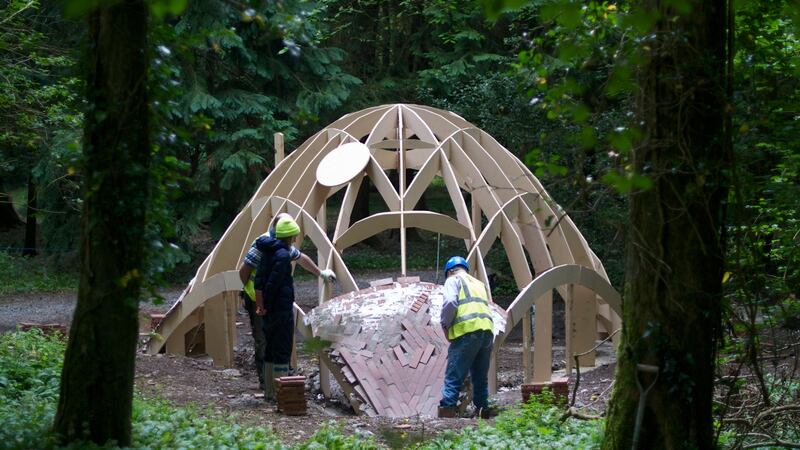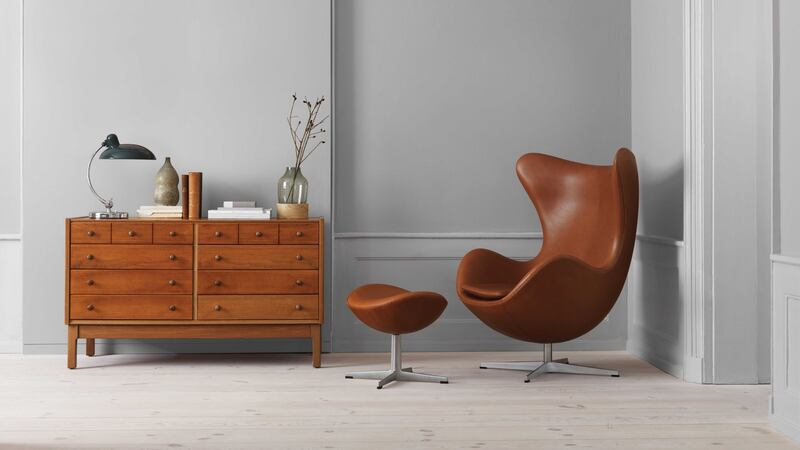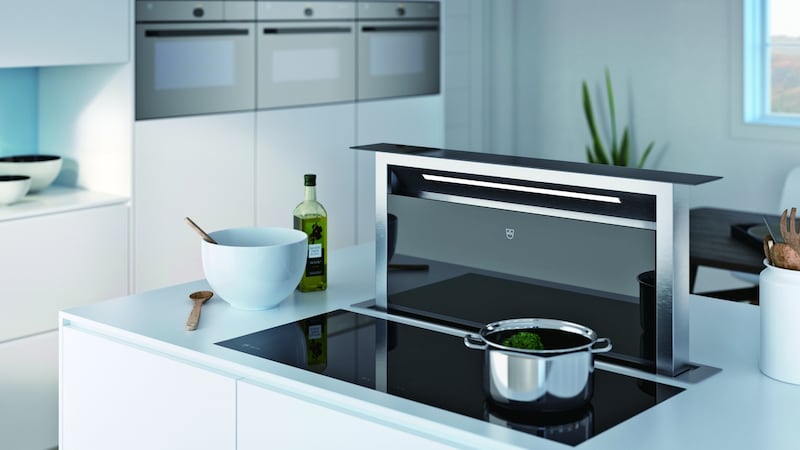This weekend, the Body & Soul festival at Ballinlough Castle, Co Westmeath, is offering its annual eclectic mix of musical and mystical experiences. The festival has always been as much about yurts and yoga as singer-songwriters and synths, but this year it also aims to get people talking – or maybe dancing? – about architecture.
Nestling among the trees, and the chilled live performances from Metronomy, Bonobo and Lambchop, is an unusual domed structure. Part tent, part beehive hut, part bread oven, this “funicular folly” was designed by architect Rae Moore and built with a little help from the giants of the Irish construction industry.

How did it come about? “I find that architecture, with a capital A, doesn’t really feature in my life,” Moore says. “It’s my job, but I don’t feel it’s a significant part of how my mates or my family would live. The idea with this is to make architecture relevant, to bring it into a cultural space. We can all get so locked into what a house should look like – what this should be, or what that should be. This is an opportunity to present something to people that they find totally unexpected.”
The name “funicular” refers to the natural shape which any material will take under the force of gravity – think of a chain hanging between two posts, in a graceful curve. Work on the folly began with a curved timber frame. Thin layers of brick and cement were added to make a cohesive shell; finally, the frame was removed to reveal the slender freestanding canopy.

“When you look at many of the most innovative constructions humans have ever built, they are always trying to capture, express or elevate the human spirit,” Moore says. “Contemporary architecture has become so commercial, there is very little ‘spirit’ left. The funicular folly is an attempt to inject some spirit into contemporary architecture.”
This being an arts festival and funding being in short supply, she had a total budget of just €400. Happily, the folly-building developed into a collaboration of the most harmonious kind, with big companies giving materials and expertise for free. The engineering company Arup was on board from the beginning. Kingscourt Brick provided bricks made from Irish clay. Coillte donated the timber used to create the initial dome, Kilsaran supplied the cement and Gyproc Saint-Gobain the plaster.
The virtuoso bricklaying was done by Bennett Construction from Mullingar. "They put their best team to work on the project," Moore says. "Most of them would be in their 50s and 60s – really experienced guys – but none of them had ever done anything like this before. And they were driving from Newry down to Ballinlough every day."
Three metres high at its highest point, the folly is designed to be super-slim yet super-strong. It will outlive the festival weekend and, hopefully, camp in the woods at Ballinlough for many years to come. bodyandsoul.ie
Collection of design showstoppers
We all know that one special piece of furniture can transform a room. What we’re often less sure about is which piece, where to put it and how to get hold of it in the first place. The showroom at Reside, the new domestic furniture section at Walls to Workstations in Baldonnell, Co Dublin, is where you can see an eye-popping collection of design showstoppers, including such Nordic classics as Eero Saarinen’s Womb Chair (€5,252), Fritz Hansen’s Lune sofa (€4,800) and the Arne Jacobsen-designed Egg Chair (€7,011).

Stacked shelving from Muuto, Gubi’s Pedrera coffee table and various lamps from the Light Years company accessorise and complete the look. Reside’s managing director, Michael Clarke, says, “we’ve moved beyond the distinction between workplace and home, into a hybrid which has been called ‘the third space’.” To reach it with the help of Reside’s experts, you need to make an appointment: residebyw2w.ie, or email hello@residebyw2w.ie
Downdraft extractor hood
Who could get excited about an extractor hood? Well, the people at the Swiss manufacturing company V-ZUG did: and designed an appliance that is less like a piece of functional kitchen equipment and more like a snazzy flat-screen telly, or the headlights on a James Bond-style sports car. When you need it, it materialises smoothly from your kitchen island or worktop; when you don’t, it vanishes from sight.

A high energy-efficiency rating and optimum aerodynamics just add to the appeal of its touch-control glass display and LED lighting, along with a “clean air” function which sees the fan motor run – quietly – for 10 minutes every hour in order to promote a healthy, aerated kitchen environment. And, extractor-hood cynics take note, it comes with the option of either a standard charcoal filter or a long-life version that lasts for three years. This wondrous machine goes by the suitably cryptic name DSTS (or plain old Downdraft Extractor Hood), and costs approximately €2,250. vzug.com











